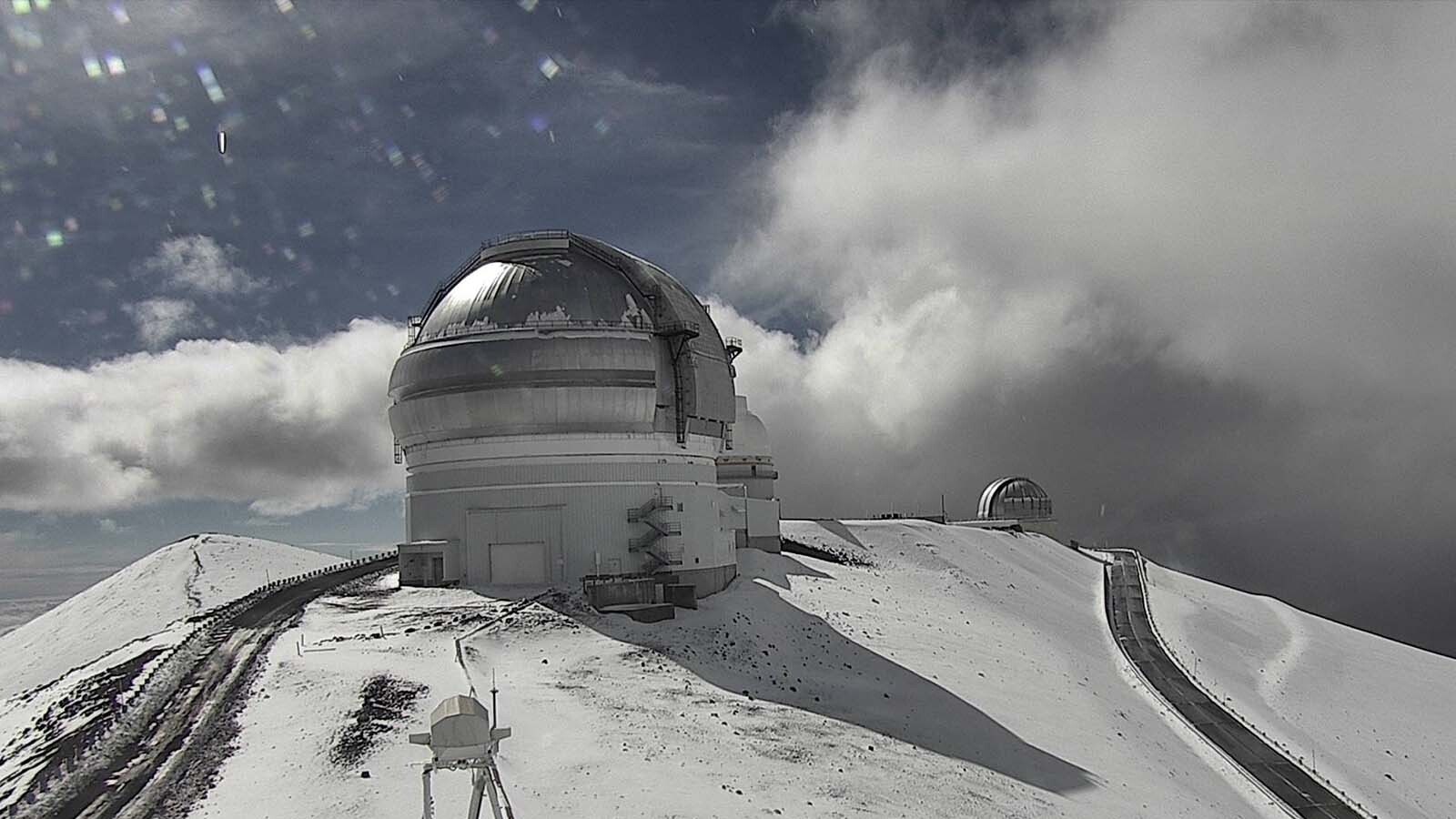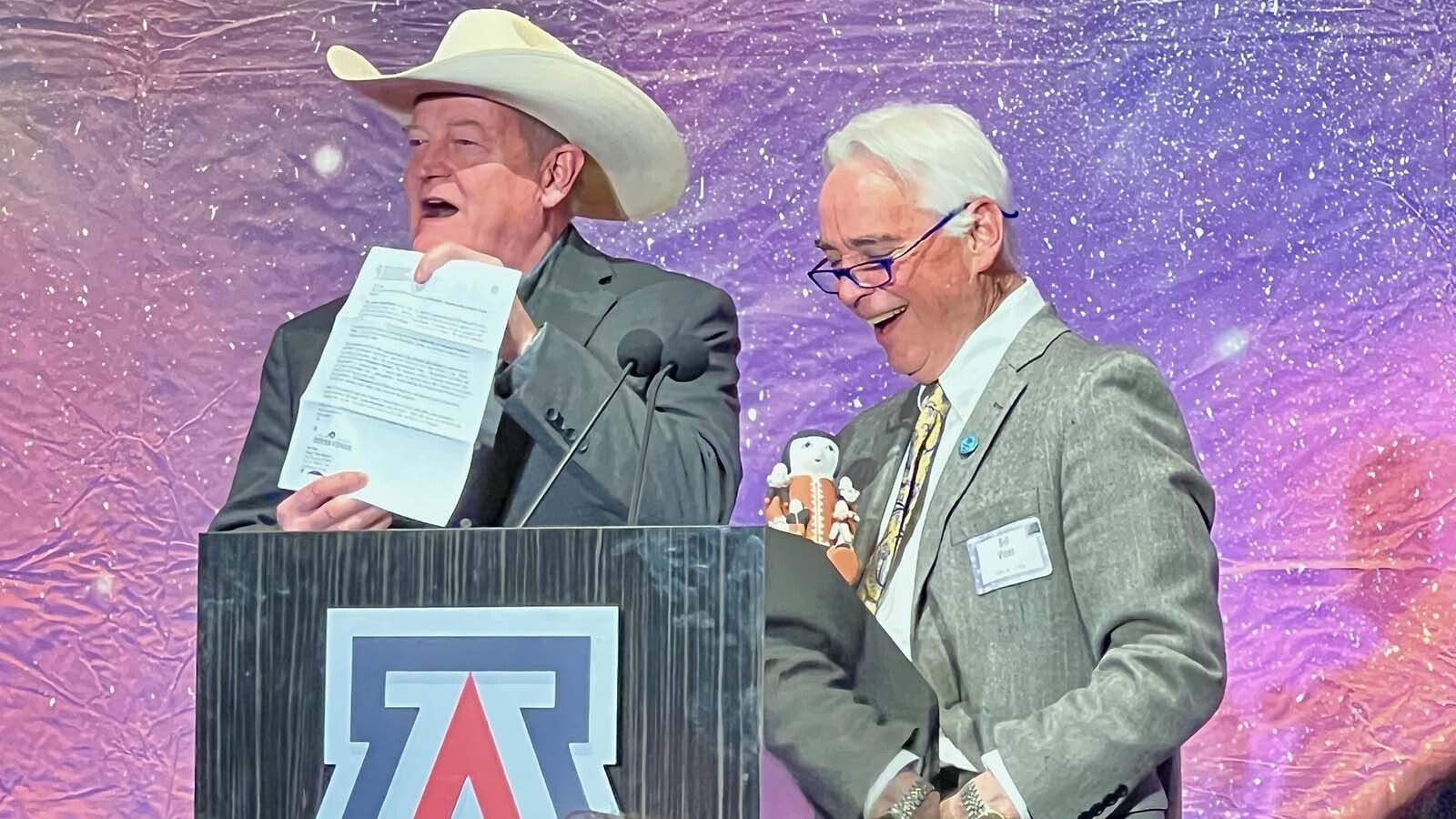Natural Trap Cave in the Bighorn Mountains of Wyoming is one of Wyoming's most important paleontological sites which is really saying something. The 85-foot-deep sinkhole contains a treasure trove of bones from Ice Age animals, kept perpetually cool and “fresh” in the subterranean environment.
Fossils recovered from Natural Trap Cave include bones from the Late Pleistocene ancestors of Wyoming’s modern-day rabbits, deer, bighorn sheep, and bison. The cave also contains remains of extinct Ice Age icons like American lions and cheetahs, short-faced bears, and mammoths.
For the people fortunate enough to descend into the sinkhole and study the fossils buried in its depths, arguably the most interesting animal found in Natural Trap Cave is “Packy Le Pew,” an ordinary pack rat that gained a new life after death.
“Funnily enough, we're a little attached to him,” said Julie Meachen, a mammalian biologist at Des Moines University studying the paleoecology of Natural Trap Cave. “It was an interesting taphonomy experiment that we took with us.”
Rodent Research Process
Meachen led a team of paleontologists during a 2014 excavation of Natural Trap Cave to recover the fossils preserved at the bottom, some of which are 30,000 years old. They needed a rope to descend to the sandy bottom of the sinkhole, which maintains temperatures below 50 degrees and 98% humidity.
“Packy” is not a 30,000-year-old pack rat. The unfortunate rodent fell into the sinkhole while Meachen’s team was working there in the summer of 2014.
“Packy had fallen in overnight,” she said. “We found him at the bottom, freshly dead.”
Where most people would see a stinking corpse, Meachen and her team saw a stinking corpse, but one that presented a unique opportunity. They decided to keep the dead packrat where it was and watch what happened to its body.
“We wanted to know what kind of processes bodies go through in decomposition when they're down in the cave,” she said. “So, we didn’t bury him. We left him exposed.”
Meachen placed a small cage over Packy’s body. The cage's holes were small enough to prevent living rodents from dismembering the carcass but large enough for insects to access it.
And so, Packy Le Pew remained at the bottom of Natural Trap Cave. Meachen and her team kept tabs on the dead pack rat for three consecutive summers and watched nature take its posthumous course.
Dry And Mummified
The decomposition of Packy Le Pew provided valuable information on what does and doesn’t happen post-death in Natural Trap Cave. Meachen said one difference between the modern packrat and the 30,000-year-old fossils was its position in the sinkhole.
“A lot of the animals that fell into Natural Trap Cave fell into the ‘drop zone’ where they got rained and snowed on,” she said. “Decomposition was significantly sped up because they were wet from precipitation. We kept Packy out of the drop zone and kept him dry because we wanted to see what the taphonomic process was like when an animal was dry.”
While Packy was kept out of the rain, the researchers watched how the decomposition process played out. No living rodents got through the cage, and it was too cold for insects to go to work on the carcass.
After three years, Meachen said Packy’s body had become “shrunken and gaunt.” It was utterly unlike any of the Pleistocene fossils they discovered.
“He basically turned into a mummy,” Meachen said. “He still has skin, fur and bones and not a whole lot of anything else. We learned that if bodies are not in the drop zone, they will probably mummify.”
That insight provided more information on the importance of moisture in preserving Pleistocene fossils in Natural Trap Cave. Modern animals are the only mummified specimens recovered from the cave, which tells Meachen that the sinkhole’s atmosphere wasn’t conducive to mummification for most of its 30,000-year history.
“There are no Pleistocene mummies in Natural Trap Cave, unfortunately,” she said. “We think we had quite a bit of water movement in the cave during the Pleistocene, and it means that the conditions were not right for forming mummies in the drop zone.”

Freezer Friend
Meachen only secured enough funding to continue excavations at Natural Trap Cave for three summers. The cave was closed at the end of their final trip in Summer 2017.
Packy Le Pew wasn’t left behind to rot. He literally and figuratively moved up in the world, removed from the sinkhole, and moved onto the Des Moines University campus.
“I didn't know if we were going to end up going back there or not,” Meachen said, so we took Packy back with us and stuck him in our freezer. He’s been frozen since 2017.
Will Packy participate in some valuable scientific inquiry in the future? Meachen doesn’t think so, but that wasn’t why he was brought to Des Moines.
“We’re attached to him,” she said. “So, we just keep him.”
Back To The Bottom
Meachen finally returned to Natural Trap Cave this past summer. She described it as “a really great dig.”
“We found a bunch of stuff that we haven't found a lot of in the past,” she said. “We found several scapulae of multiple species, including bighorn sheep and American lion, and the other big thing we found was a vertebra from a mammoth. We have found very few mammoths there, so that was really interesting.”
Meachen’s current research, conducted in collaboration with Mark Clements from the University of Wyoming and Jenny McGuire from Georgia Tech, focuses on how aridity impacted the Late Pleistocene mammals preserved at Natural Trap Cave.
“We’re looking at these mammals' long bones and teeth to examine wear patterns, get body size estimation, and see if these things change through time and in association with a drying climate,” she said. “We've got a wonderful pollen record, isotopes from the dirt, and bacterial samples that give us a great climate record over the last 30,000 to 50,000 years. Now, we want to see if the animals are changing in response to that climate.”
Packy Le Pew won’t leave his luxurious freezer to return to Natural Trap Cave. The pack rat played its part and revealed how decomposition works in one of the most unique Pleistocene sites in Wyoming and the world.
“The cave never disappoints,” she said. “It’s always productive, and Packy Le Pew and an unexpected and interesting taphonomy experiment.”
Andrew Rossi can be reached at arossi@cowboystatedaily.com.





